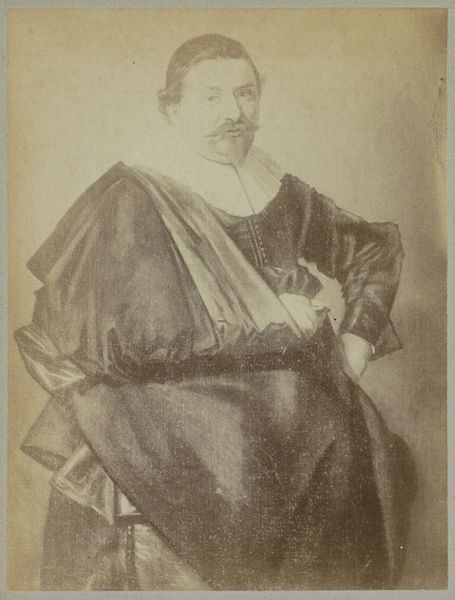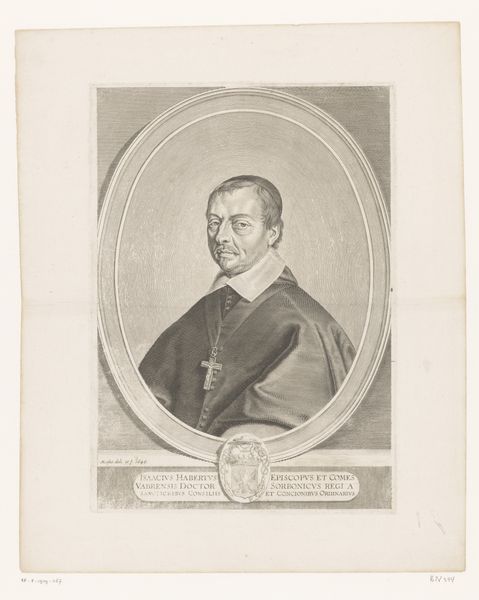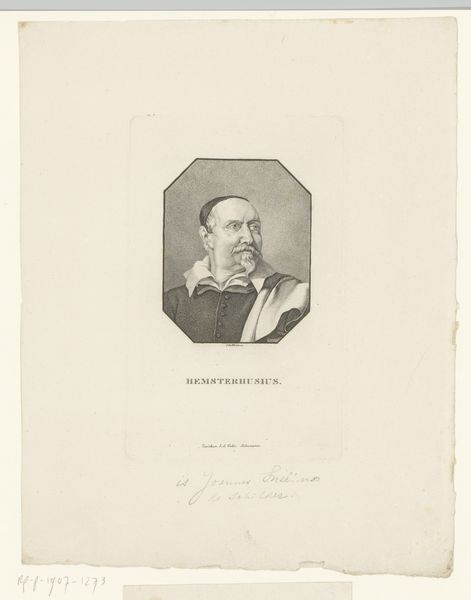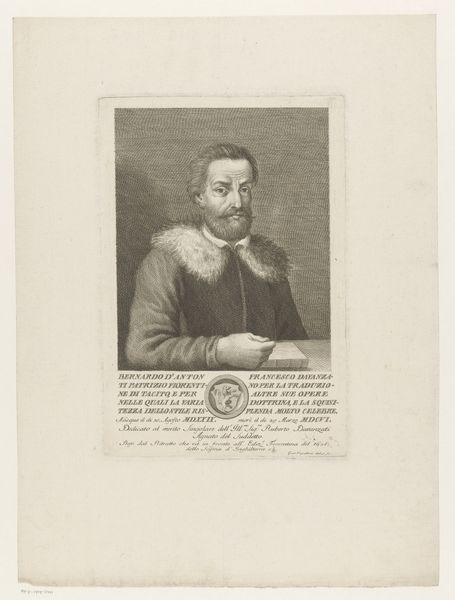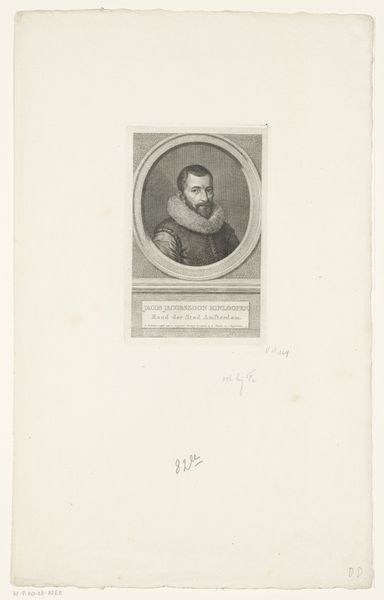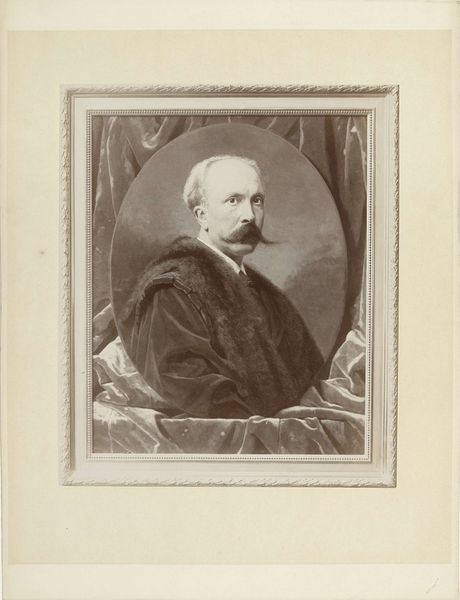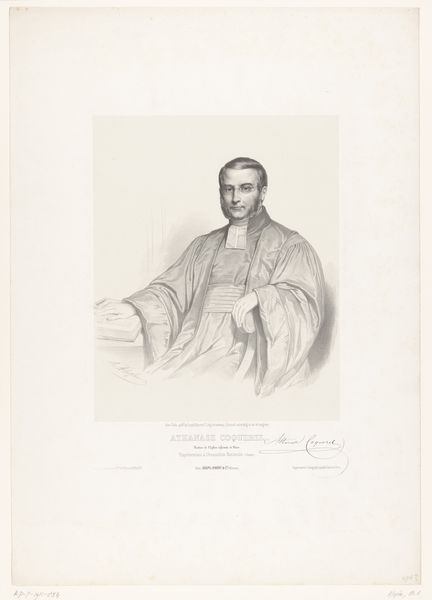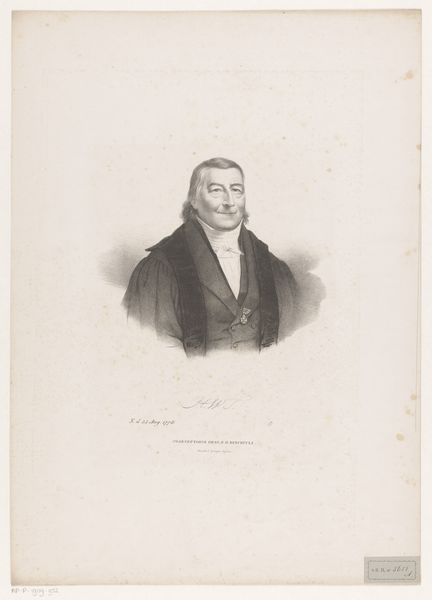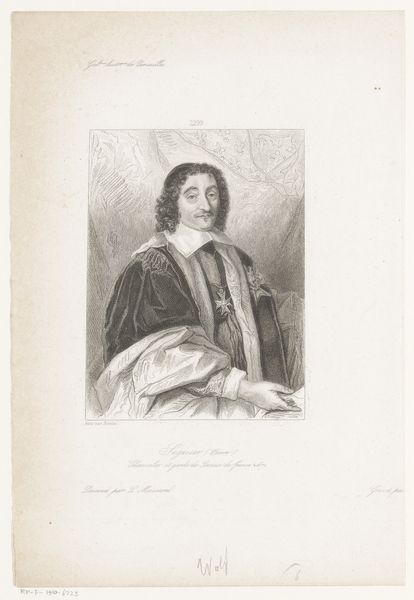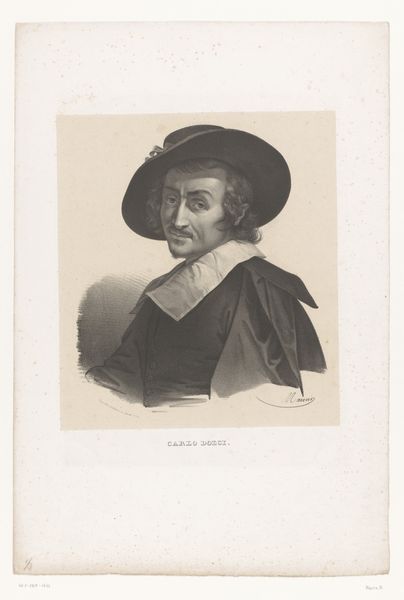
print, engraving
#
portrait
#
pencil drawn
#
light pencil work
# print
#
old engraving style
#
historical photography
#
pencil drawing
#
pencil work
#
academic-art
#
engraving
#
realism
Dimensions: height 308 mm, width 232 mm
Copyright: Rijks Museum: Open Domain
Editor: So, this is "Portrait of an Unknown Man with Book," created by Giuseppe Longhi in 1804, done as an engraving. The fine lines make it feel almost like a photograph. What strikes you about it? Curator: It's interesting to consider the engraving process itself. Look at the labor involved in creating these precise lines, essentially translating flesh and fabric into a series of incised marks. What does that say about value and representation in this period? Is it elevated due to its means of production? Editor: I hadn’t considered that. It makes me think about mass production versus, say, painting. Did prints democratize portraiture or just create another level of access? Curator: Exactly! Engravings allowed for wider dissemination of images, influencing consumption habits and creating visual culture accessible to a broader public than painted portraits ever could. Notice, though, that it’s still tied to academic art, to realism; even in print, the status of portraiture remains. Editor: The way he holds the book…almost self-consciously, I'd say. Is it supposed to symbolize his intellect? Curator: Potentially, but it also draws attention to book production itself. Who was consuming these books, and who could afford to be depicted with one? The engraving gives us access, not only to an image of the man, but insight into the labor, materiality, and ultimately, social class associated with both the portrait and the book. Editor: That really changes how I see it. It’s not just about who he is, but *how* we know him and why. Thanks for sharing that! Curator: Precisely! And hopefully it highlights that every work is enmeshed with considerations surrounding material and social conditions.
Comments
No comments
Be the first to comment and join the conversation on the ultimate creative platform.

